Odin is a key figure in Norse mythology, who is also known as the All-Father. He is both revered and feared, representing wisdom, knowledge of upcoming battles as well as discovering the mysteries of life and death, reflected in the runes.
Often referred to as the wanderer, Odin’s quests for knowledge and power reveal a complex character shrouded in mystery. In this article, we will explore:
- Odin’s multifaceted nature
- His journeys as the Wanderer
- Symbols and companions associated with him
- Themes surrounding his persona
- His cultural impact
- Lesser-known facts challenging traditional views
- Contemporary relevance in modern pagan practices
Join us as we uncover the intricacies of Odin’s legacy and its significance in today’s world.
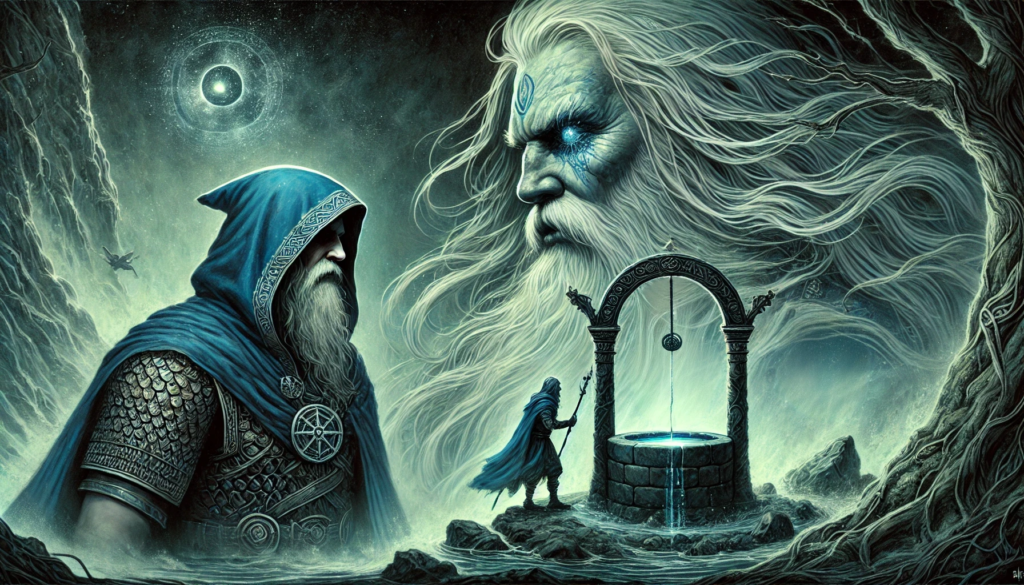
Table of Contents
The Many-Sided Nature of Odin
Odin, the Norse god known as the All-Father, is a figure of great complexity and versatility. He embodies various qualities and areas of influence, including wisdom and healing.
The Different Aspects of Odin
Wisdom
Odin is famous for his insatiable thirst for knowledge. He even went so far as to sacrifice one of his eyes in order to drink from Mimir’s well and gain unparalleled wisdom. This act represents his unwavering commitment to understanding and insight.
Healing
Odin is also known as a healer who has the power to cure diseases and bring comfort. His expertise in runes includes those specifically meant for healing, emphasizing his role as a guardian of health.
Death
As the ruler of Valhalla, Odin holds sway over fallen warriors who are honored there. However, his connection to death goes beyond mere endings; it encompasses bravery and the eternal cycle of life and rebirth.
The Dual Nature of Odin
Odin’s character showcases a unique combination of heroic and mystical traits:
Heroic Qualities
As a warrior god, Odin leads the Aesir in battles against giants and other threats to Asgard. His courage and strategic thinking make him an iconic figure in martial matters.
Mystical Abilities
In addition to his physical strength lies his deep involvement with magic and prophecy. He practices seidr (a form of Norse magic) and often disguises himself to acquire knowledge or subtly influence events. In addition to that he is a known shapeshifter and can appear as different animals.
The Importance of Sacrifice
Sacrifice plays a crucial role in defining who Odin is. One notable example is when he hung himself on Yggdrasil, the World Tree, for nine days without food or water in order to uncover the secrets behind runes—a powerful symbol representing this theme.
“I know that I hung on a wind-swept tree nine long nights, Wounded with a spear, dedicated to Odin, Myself to myself.”
This quote from the Hávamál illustrates how sacrifice serves as fuel for Odin’s relentless pursuit of wisdom. By enduring immense hardship, he gains profound insights that benefit all beings under his care.
Odin’s many-sided nature makes him an intriguing figure within Norse mythology. His qualities span different realms while his heroic actions and mystical endeavors highlight the intricacies that define him.
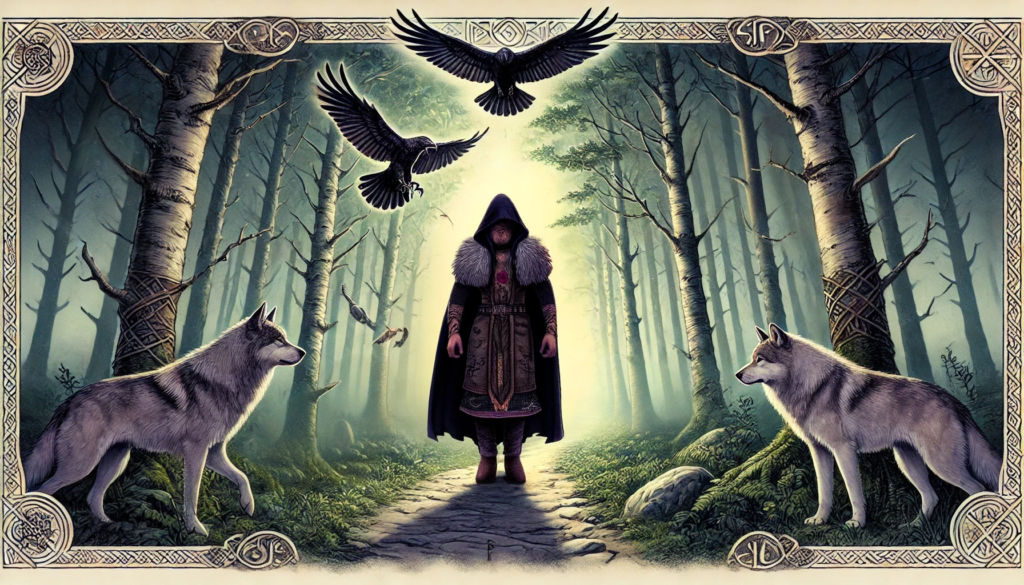
Odin’s Journey as the Wanderer
Odin, the mysterious All-Father, is often called “the Wanderer” in Old Norse mythology.
This title isn’t just a poetic expression; it represents his relentless pursuit of wisdom and understanding across different realms, as well as she shamanic-like capability to travel the nine worlds of Yggdrasil up and down as a mediator on his horse Sleipnir between the worlds, gods and human affairs.
In continental German-speaking Europe, he is thus also known as the ‘Schimmelreiter’ – the one who rides a white horse.
The Essence of Odin the Wanderer
Odin’s travels are central to his character. Unlike other gods who might stay in their divine homes, Odin goes on extensive journeys, often disguised. These trips serve multiple purposes:
- Gathering Knowledge: Odin’s insatiable thirst for knowledge drives him to explore every corner of the cosmos.
- Experiencing Human Life: By wandering among mortals, he gains firsthand experience of human struggles and triumphs.
- Testing and Guiding: He frequently tests the courage and integrity of those he encounters, offering guidance or rewards to the worthy.
Notable Myths Illustrating His Travels
One of the most compelling stories is Odin’s sacrifice on Yggdrasil, the World Tree. In this myth, he hangs himself from the tree for nine days and nights, pierced by his own spear, Gungnir. This self-inflicted ordeal grants him profound wisdom and the secrets of runes.
Another fascinating tale involves his visit to Mimir’s Well, where he sacrifices one of his eyes to drink from its waters. This act bestows him with unparalleled insight.
These stories highlight:
- His willingness to endure extreme hardship for knowledge.
- His complex relationship with sacrifice.
Motivations: A Deeper Dive
Odin’s wanderings are not aimless. They are driven by a profound desire to accumulate knowledge and experiences that transcend both mortal and divine realms.
- Quest for Runes: His journey on Yggdrasil reveals the significance he places on ancient symbols.
- Seeking Prophecies: Through encounters with seers and other mystical beings, he gains insights into future events.
- Interacting with Mortals: His numerous disguises allow him to blend in with humans, learning about their lives while subtly influencing their fate.
These motivations paint a picture of a god who values wisdom above all else, even at great personal cost. Odin’s wanderings make him a unique figure in mythology—a deity who actively seeks out knowledge rather than waiting for it to come to him.
Through these mythological journeys, Odin exemplifies the virtues of curiosity, resilience, and sacrifice—qualities that resonate deeply within us all.
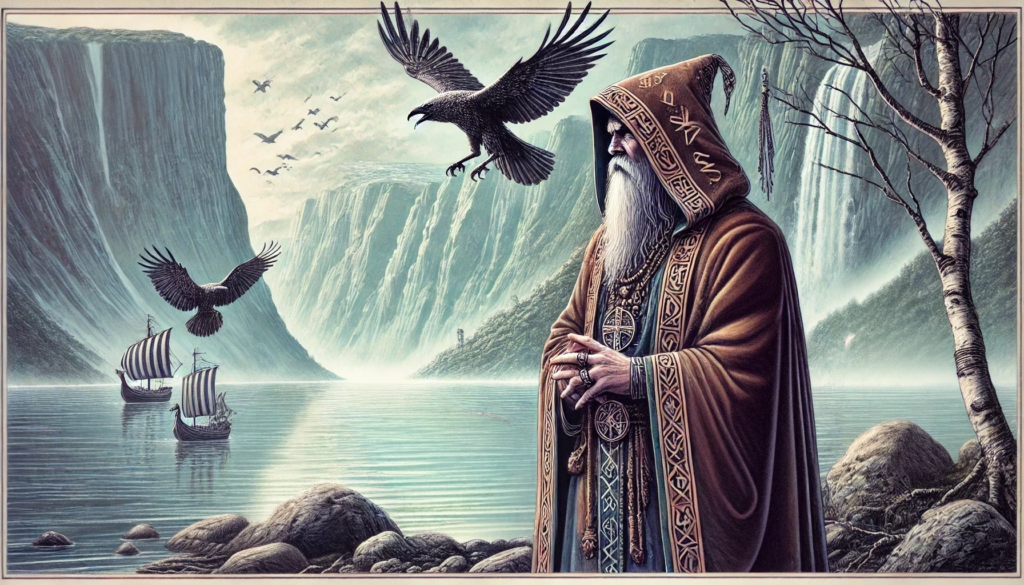
Symbols and Companions of Odin
The mythology surrounding Odin is rich with symbols and companions that enhance his formidable presence across the realms. Each element carries profound significance, contributing to Odin’s enigmatic and multifaceted nature.
Sleipnir: The Eight-Legged Steed
Sleipnir, Odin’s eight-legged horse, stands as a testament to the extraordinary in Norse mythology.
Born from Loki (who had shapeshifted into a mare) and the stallion Svaðilfari, Sleipnir possesses unmatched speed and agility, making him an unparalleled companion for Odin’s travels through the Nine Realms.
His eight legs symbolize not only his incredible swiftness but also his ability to traverse different worlds effortlessly. Sleipnir allows Odin to fulfill his role as a wanderer, seeking wisdom and overseeing events across the universe.
As many scholars such as Ellis Hilda Davidson note, this myth strikes as particularly shamanic. In many inner north Eurasian cultures, the shamanic drum is referred to as a horse that the shaman rides in order to travel the tripartite world pillar.
In traditional Eurasian cultures who either live off of hunting and gathering or reindeer pastoralism, the world pillar reflects the fix star polaris in the sky, the world axis.
Odin, too, rides a horse in order to travel Yggdrasil. The nine worlds of Yggdrasil perhaps reflect a younger version of the older world pillar.
Traditional Eurasian societies do not separate the world between tamed and wild, however, this divide exists the agriculturalist Norse society as ‘utgard’ and ‘midgard’.
Hugin and Munin: Thought and Memory
Odin’s ravens, Hugin (thought) and Munin (memory), are essential for gathering information across the realms. These intelligent birds fly out each day to observe and collect knowledge, returning to whisper their findings into Odin’s ears.
This constant influx of information ensures that Odin remains well-informed about the happenings in Midgard (Earth) and beyond. The duality of thought and memory highlights Odin’s dependence on both cognitive processes to maintain his wisdom and authority.
Geri and Freki: The Wolves
Geri and Freki, Odin’s loyal wolves, accompany him in many depictions. Their names translate roughly to “the ravenous” or “greedy one.”
They symbolize Odin’s connection with primal instincts and his dominion over life and death as well as the role of possible ‘animal helpers’ who likewise possess shamanic qualities as scholars such as Clive Tolley (2009, ‘Shamanism in Norse Myth and Magic’) write.
While they often appear at his feet during feasts in Valhalla, where slain warriors dine with him, their presence underscores the ferocity that lies beneath Odin’s pursuit of knowledge.
The Spear Gungnir
Gungnir is not just any spear; it is a symbol of divine power and authority crafted by the dwarves—master smiths in Norse mythology.
Made from Uru metal (according to some sources), Gungnir always hits its mark when thrown. This infallible weapon embodies Odin’s unerring judgment and his role as a god who governs fate. In battles, it serves as a reminder of his omnipotence.
The Ring Draupnir
Draupnir is another significant artifact in Odin’s arsenal. This gold ring has the unique property of multiplying itself; every ninth night, eight new rings identical to Draupnir drop from it.
Symbolizing abundance and prosperity, Draupnir also represents endless possibilities—a fitting emblem for a god eternally seeking new knowledge and experiences.
These symbols and companions offer deep insights into Odin’s character—his relentless quest for wisdom, his connection with life’s primal forces, and his unwavering authority across realms.
Each element not only enriches our understanding of this enigmatic deity but also invites us to explore deeper layers of Norse mythology.
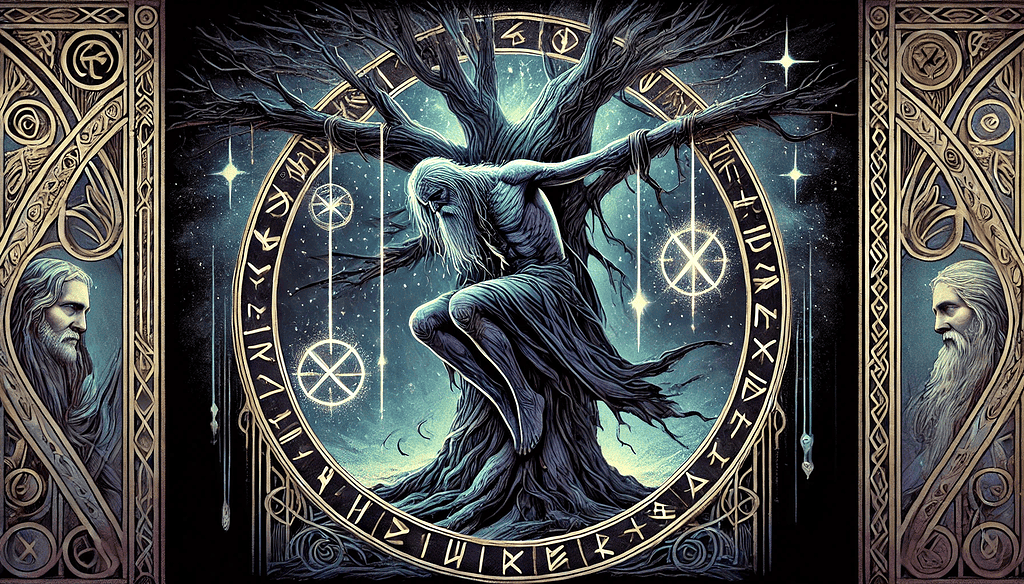
Themes Surrounding Odin’s Character
Odin embodies several profound themes that resonate deeply in Norse mythology, making him a complex and multifaceted deity.
Wisdom-Seeking Through Sacrifice
One of the most compelling aspects is his relentless quest for wisdom, often achieved through significant personal sacrifice. The tale of Odin hanging himself from the world tree, Yggdrasil, for nine days and nights is iconic.
Pierced by his spear, Gungnir, he sacrificed himself to himself to gain the knowledge of runes—an act symbolizing ultimate commitment to acquiring wisdom. His willingness to give up an eye at Mimir’s well for a sip of its waters further underlines this theme.
These sacrifices highlight the high value placed on knowledge and enlightenment.
The Duality of Life and Death
Odin’s character also encapsulates the duality of life and death. As the god of war and death, he presides over battles and decides the fate of warriors. Yet, he is equally revered as a healer and a bringer of life through various forms of wisdom and magic.
This dual nature manifests in his connection with Valhalla, the majestic hall where fallen warriors are honored. Odin’s selection of those who die gloriously in battle to join him in Valhalla emphasizes this duality—death as both an end and a new beginning.
Role in Valhalla
Valhalla, Odin’s grand hall, stands as a testament to his importance among warriors. Chosen by Valkyries, these warriors are not just honored; they prepare for Ragnarök, the ultimate battle at the end of time which acts as a transformative event – not to be confused with the Christian apocalypse.
This concept underscores Odin’s role as a mentor and leader, training his chosen ones for an apocalyptic confrontation. For many Norse warriors, dying in battle with the hope of reaching Valhalla was the highest honor.
Each theme surrounding Odin paints him as a deity who transcends simple categorization—a wise seeker through sacrifice, a complex figure balancing life and death, and a revered leader preparing his warriors for their greatest challenge.
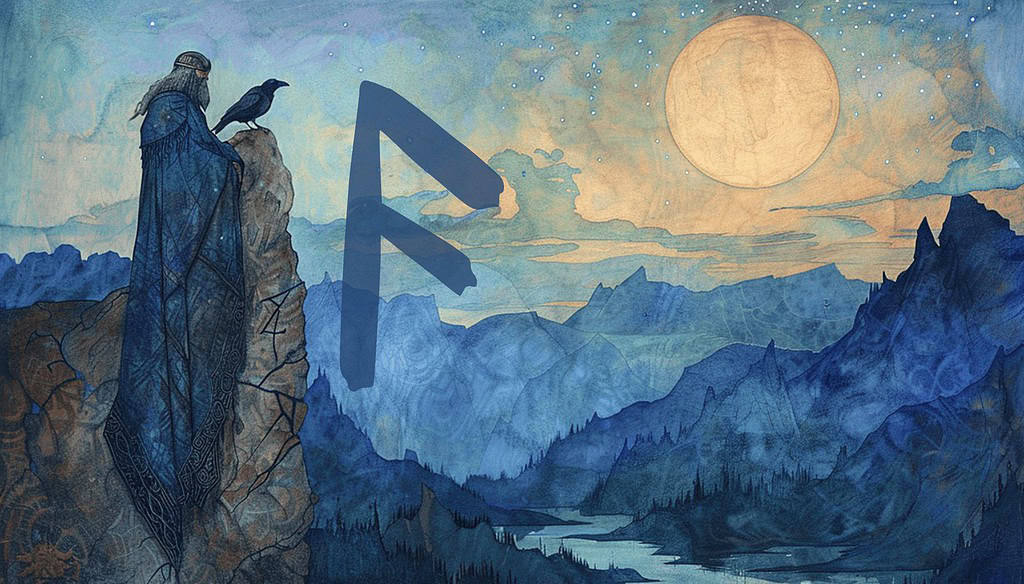
The Influence of Odin Across Cultures
Odin, often regarded as the chief deity of the Aesir tribe, is a figure whose influence stretches far beyond the Norse pantheon. His many attributes and domains have inspired various cultures to adopt different names and perspectives of this multifaceted god.
Names of Odin Across Cultures
Odin is known by numerous names, each reflecting a different aspect of his character:
- Wotan: In Continental German-speaking Europe, this name emphasizes his warlike attributes. ‘Wut’ in modern High German means ‘fury’.
- Woden: This is the Anglo-Saxon version, where he retains his role as a wisdom-seeker.
- All-Father: Highlighting his position as the patriarch of the gods.
- Harbard: Often used in stories where Odin appears as a disguised traveler or wanderer.
Comparison with Other Deities in Germanic Mythology
When comparing Odin to other deities within Germanic mythology, several interesting contrasts arise:
- Thor: While Thor is often seen as the protector of humanity with his immense strength and thunderous presence, Odin’s focus lies on wisdom, knowledge, and subtle manipulation.
- Freyr: Associated with fertility and prosperity, Freyr’s domains contrast sharply with Odin’s more grim associations with war and death.
- Tyr: Known for his bravery and justice, Tyr represents another facet of leadership distinct from Odin’s enigmatic wisdom.
Influence on Literature
Odin’s influence permeates through ancient texts like the Poetic Edda, which offers profound insights into his lore. Tales such as “Hávamál” provide direct words attributed to Odin himself, imparting wisdom on various aspects of life.
These works remain crucial for understanding not just Norse mythology but also the cultural values and philosophical inquiries of ancient Scandinavian societies.
In medieval sagas, Odin frequently appears as a mysterious wanderer who tests heroes or bestows invaluable knowledge. Such narratives reinforce his image as both an omnipotent deity and an enigmatic seeker of truths.
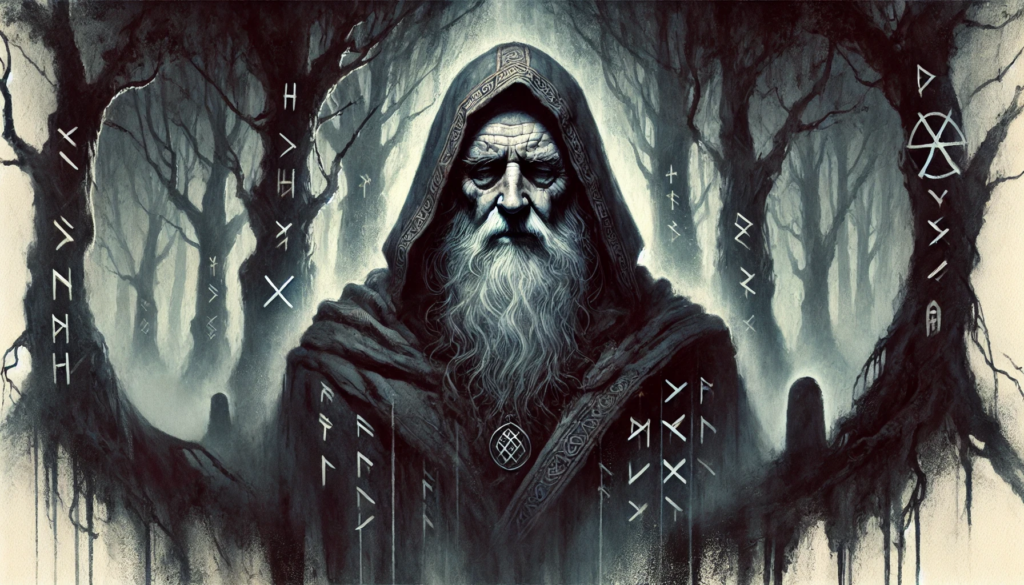
Lesser-Known Facts About Odin That Challenge Traditional Perceptions
Odin, known for his wisdom and leadership, also has qualities that go against traditional views. One of the most notable traits is his ability to shapeshift. While many gods have a fixed form, Odin often changes his appearance to help him on his quests.
Shapeshifting Abilities
Odin’s shapeshifting isn’t just for show; it serves practical purposes. Here are some examples:
- Forms and Functions: Odin might take on the appearance of an old man to gain someone’s trust or transform into a bird to gather information about his enemies.
- Mythological Examples:
- In the Poetic Edda, Odin becomes a serpent in order to steal the mead of poetry.
- In another story, he disguises himself as a one-eyed traveler named Grimnir, seeking knowledge and allies.
These transformations add depth to his character as a wanderer, showcasing his adaptability and cleverness.
Depictions in Various Myths
Odin is portrayed differently in various Norse myths, revealing different sides of his personality.
- Heroic vs. Mystical: Some stories focus on his role as a heroic leader in battle, while others highlight his mystical pursuits—such as sacrificing an eye at Mimir’s well for wisdom or hanging himself on Yggdrasil to learn about runes.
- Cultural Interpretations: Different regions had their own interpretations of Odin:
- In Icelandic sagas, he is depicted as a wise but unpredictable god.
- In Germanic legends, he often has more martial qualities.
Unconventional Traits
In addition to shapeshifting and varied portrayals, Odin also possesses unconventional traits that make him even more interesting:
- Association with Death: Unlike other gods who are solely associated with life or prosperity, Odin embraces death. He commands the Valkyries who choose fallen warriors to join him in Valhalla.
- Hidden Knowledge: Odin’s quest is not just for power but also for hidden knowledge. He seeks understanding beyond what is commonly known. This relentless pursuit sets him apart from other deities who may only seek glory or dominance.
Understanding these lesser-known aspects reveals a complex god whose intricacies continue to fascinate scholars and enthusiasts alike.
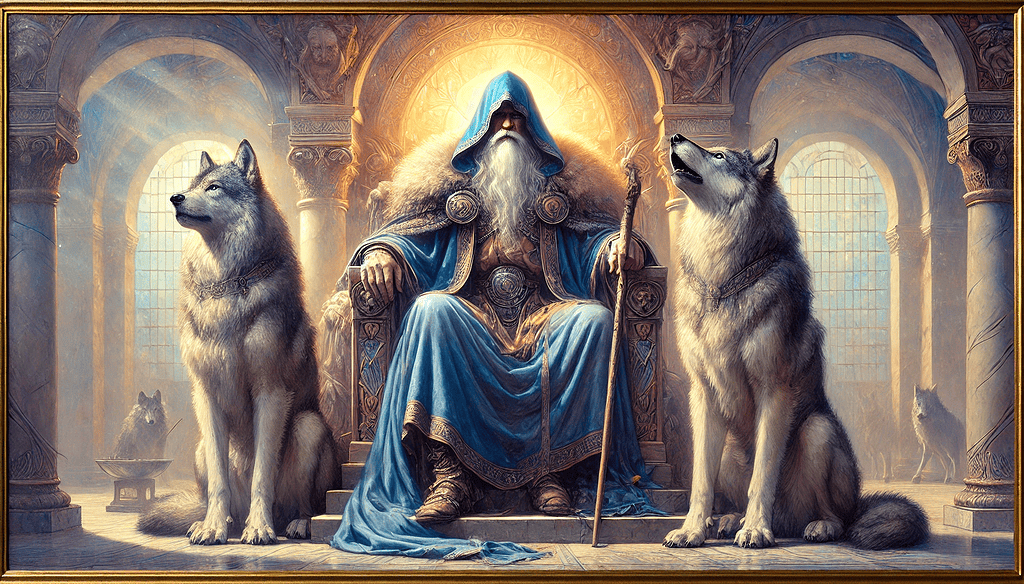
Contemporary Relevance of Odin’s Mythology in Modern Pagan Practices
Odin’s mythology continues to inspire and shape modern paganism, especially within Norse pagan practices. Contemporary pagans honor Odin through rituals and offerings, often aligning with specific festivals.
Key celebrations like Yule and Midwinter serve as pivotal moments for veneration.
During Yule, adherents might create altars adorned with symbols associated with Odin such as ravens (Hugin and Munin), wolves (Geri and Freki), or his eight-legged steed, Sleipnir. Rituals often include:
- Offerings: Mead, bread, or crafted items
- Prayers: Invoking Odin’s guidance and protection
- Feasts: Celebratory meals shared in his honor
Modern neo-pagan movements like Ásatrú have been instrumental in reviving and adapting Norse traditions. Ásatrú practitioners incorporate veneration for gods like Odin alongside nature worship, seamlessly blending ancient reverence with contemporary spirituality.
Ásatrú practices may include:
- Blóts: Sacrificial ceremonies where offerings are made to Odin
- Sumbel: Ritual toasts and oaths in communal gatherings
- Rune Casting: Divination practices seeking Odin’s wisdom
Odin’s multifaceted nature—wise, enigmatic, and powerful—resonates deeply in these modern contexts. His mythology offers a rich tapestry for exploring themes of wisdom-seeking, sacrifice, and transformation.
The wisdom-seeker within every individual finds a kindred spirit in Odin.
The enduring legacy of Odin within modern paganism underscores his timeless appeal. From ritualistic practices to personal meditations on his stories, Odin’s presence remains a guiding force for those looking to connect with the profound depths of Norse heritage.
Embracing Our Inner Wisdom-Seeker Through Our Connection With Odin
Engaging with Odin’s myth is not just an academic pursuit but a deeply personal journey. You can draw inspiration from Odin’s relentless quest for wisdom and apply it to your own life. Reflect on ancient stories, embrace rituals, or simply meditate on his virtues of curiosity and sacrifice.
Whether through studying runes, wearing symbolic Viking jewelry, or participating in modern pagan practices, let Odin’s legacy guide you towards a deeper understanding of yourself and the world around you.
Further reading and References:
Clive Tolley (2009.). Shamanism in Norse Myth and Magic. 2 vols. Folklore Fellows’ Communications 296, 297. Helsinki: Academia Scientiarum Fennica, 2009.
Davidson, D.H.E., & Davidson, H.E. (1993). The Lost Beliefs of Northern Europe (1st ed.). Routledge. https://doi.org/10.4324/9780203408506

